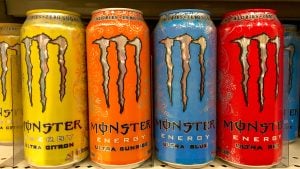That strategy was put to the test in the last 18 months. The number of stocks posting significant gains was limited to a select few, mostly in the technology sector. That meant some investors may have been having some restless nights.
But heading into the second half of 2024, there’s been considerable talk of sector rotation. So, investors are moving out of tech stocks and into other sectors. Some of that action is being seen in the movement in the Dow stocks. And even the Russell 2000, known as the small-cap index, is showing signs of life. To help keep it simple, you can look at names like these beaten-down long-term stocks that are trading near 52-week lows.
Halliburton (HAL)

Halliburton (NYSE:HAL) is an oil services company that could be an attractive option for investors looking to enter the energy trade. Energy stocks are playing catch-up after a disappointing 2023. And the rally is likely in its early stages no matter what the outcome of November’s election.
However, many analysts believe that Halliburton would be a major beneficiary of a second Trump administration. That’s because, past history suggests, it would mean more fracking and the reopening of pipelines.
But HAL stock appears to be a solid opportunity no matter who wins the election. That’s because, according to the U.S. Energy Information Administration, oil production in the U.S. averaged 12.9 million barrels a day in 2023. That was more than any country in history. And according to analysts from Goldman Sachs (NYSE:GS), this boom is likely to continue into 2026.
HAL stock dropped sharply after it reported earnings on July 19. The reason was muted guidance for the remainder of the year. But that drop found support right around the 52-week low. At 10x forward earnings and with a dividend that is almost back to its 2019 level, Halliburton offers good value among long-term stocks.
Lululemon Athletica (LULU)

Lululemon Athletica (NASDAQ:LULU) defied many expectations by posting year-over-year (YOY) gains in revenue and earnings in 2023. Investors rewarded LULU stock by pushing it to an all-time high around $500 per share. But that party ended a long time ago. LULU stock is down more than 50% in the last 12 months.
In the short term, LULU stock may drop more. The company recently paused sales on its Breezethrough leggings after just a few weeks on the market. Management said this was an opportunity to incorporate customer feedback, but analysts are less convinced. Citigroup (NYSE:C) downgraded the stock and JPMorgan Chase (NYSE:JPM) lowered its price target. In both cases, the concern is that the company is falling behind competitors regarding innovation.
But if you’re looking at Lululemon in the context of long-term stocks, it’s presenting an attractive entry point. And institutions seem to agree. After sellers outpaced buyers nearly 2-to-1 in the first quarter, buyers are back in the second quarter.
If you’re not in LULU stock yet, you’ll want to pay close attention to its earnings report on August 29. A solid report combined with a possible cut in interest rates could prove the smart money right.
McDonald’s (MCD)

You know that something isn’t quite right with the economy when McDonald’s (NYSE:MCD) is lagging the market. But even a company like McDonald’s is finding that it can’t pass along higher input costs forever. Consumers have said enough is enough, and the company is responding with menu items such as its $5 adult Happy Meal.
However, there’s a larger story going on under the Golden Arches, one of artificial intelligence (AI) and automation. The former is being used for predictive analysis as it gathers consumer ordering habits via its mobile app. And the company is partnering with IBM (NYSE:IBM) to automate its drive-thru operation.
The company has been investing in this technology since 2019. Not surprisingly, the total return on MCD stock in that time is 33.67%. That’s not particularly impressive, but it’s still well above the sector median of 22.47%. These investments will take time to play out, but the possibility of unlocking additional value makes McDonald’s a tasty choice among long-term stocks to buy on the dip.
Monster Beverage (MNST)

Monster Beverage (NASDAQ:MNST) has generated a 342% total return in the last 10 years. That’s significant because Monster Beverage doesn’t pay a dividend. It’s been all stock price appreciation. For most of that time, investors were enjoying a bull market and low interest rates. That hasn’t been the case in the last three years and the total return is just over 3% in that time.
I mention that, because the company’s earnings haven’t been bad. However, with MNST stock priced for perfection any miss will do. That happened with a penny per share miss on earnings in the company’s first quarter earnings report.
Like many of the stocks on this list, Monster Beverage may face headwinds if the economy continues to sap the purchasing power of low- and middle-income consumers. Plus, the energy drink category is getting crowded.
But Monster Beverage isn’t sitting idle. The company is growing through acquisition, and with an return on invested capital (ROIC) of over 28% as of this writing, MNST has shown an ability to turn these acquisitions into profit for shareholders.
Kenvue (KVUE)

Kenvue (NYSE:KVUE) is the consumer products arm of Johnson & Johnson (NYSE:JNJ) that was spun off in 2023. It’s been trading publicly for just over a year, and it’s down 27% in the last 12 months. But at 16x forward earnings, consumers may be getting good value.
This upcoming quarter will be the first time investors get a YOY comparison, and it’s not likely to be a good one. Consumers are increasingly turning to house brands to help mitigate the high price of staple items. That includes many of the products under Kenvue’s umbrella.
The larger question is whether these habits will become ingrained as the economy recovers. Nikolaos Sismanis researched the company’s 5% growth in organic sales last year despite these headwinds. That would suggest that consumers will come back. Earnings are expected to grow by 10% this year and analysts are forecasting 21% upside for KVUE stock. While you wait for that growth, you can collect a dividend with a juicy yield of 4.38%.
Brown-Forman (BF-A, BF-B)

Brown-Forman (NYSE:BF-A, NYSE:BF-B) is the parent company of Jack Daniels whiskey and Korbel champagne. However, the company is wrestling with the problem of what happens when consumers have champagne (or hopefully whiskey) tastes on a beer budget.
By management’s own admission, 2023 was a bad year for spirits sales, and that’s hitting the company’s top line in the last two quarters. However, revenue is still significantly higher than in 2019. That’s not reflected in the stock price which is at 2017 lows. It’s also down 21.4% in 2024 and over 25% in the last 12 months.
That’s an imbalance that investors may take advantage of. But trading at 24x forward earnings, analysts may believe the stock is not cheap as long as consumers are feeling the pinch. They have a neutral rating on the stock, and the consensus price target is only about 6% above its closing price on July 25, 2024.
Las Vegas Sands (LVS)

Las Vegas Sands (NYSE:LVS) presents a similar, but different, situation to Brown-Forman for investors to consider with long-term stocks. In its most recent earnings report, the company continued to report revenue and earnings that are growing YOY, but are substantially below 2019 levels.
Unfortunately, the company had a slight miss on the top and bottom lines that sent the stock tumbling. However, the LVS stock price is still trading at about the same price as 2019.
The company has been optimistic in the growth of traffic at its resorts in Macao and Singapore. In its most recent earnings presentation the company remarked that the market recovery in its base mass segment was still below 2019 levels. The company also noted that Chinese visitation to Macao remains below pre-pandemic levels.
Nevertheless, analysts are lowering their price targets for LVS stock, but still remain bullish, with 17 out of 21 analysts give the stock a strong buy rating.
On the date of publication, Chris Markoch had a LONG position in MCD. The opinions expressed in this article are those of the writer, subject to the InvestorPlace.com Publishing Guidelines.
On the date of publication, the responsible editor did not have (either directly or indirectly) any positions in the securities mentioned in this article.
Chris Markoch is a freelance financial copywriter who has been covering the market for over five years. He has been writing for InvestorPlace since 2019.
